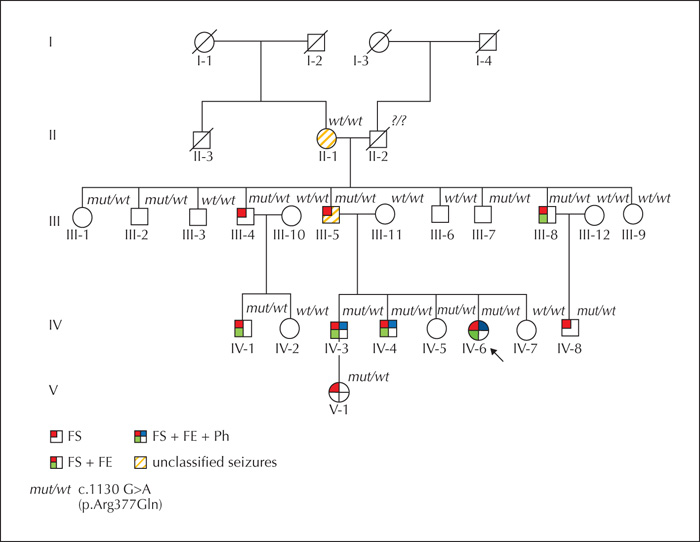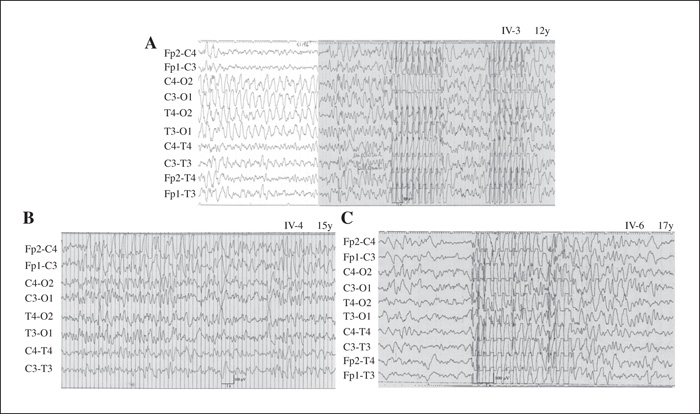Epileptic Disorders
MENUTemporal-parietal-occipital epilepsy in GEFS+ associated with SCN1A mutation Volume 23, issue 2, April 2021
- Key words: epilepsy, temporal-parietal-occipital, GEFS+, neural networks, post-ictal migraine, SCN1A
- DOI : 10.1684/epd.2021.1266
- Page(s) : 397-401
- Published in: 2021
Most families with genetic epilepsy with febrile seizures plus show a mutation in the sodium channel alpha 1 subunit gene, however, but there is much phenotypic heterogeneity and focal epilepsy remains relatively rare. Here, we report a family with electroclinical features indicative of temporal-parietal-occipital carrefour epilepsy with common occurrence of post-ictal migraine. We studied a four-generation family including nine affected subjects by means of EEG and MRI. Genetic testing was performed by targeted re-sequencing (gene panel). In most patients, seizure semiology included cognitive, autonomic, and emotional symptoms, eventually evolving towards sensory visual phenomena. Focal sensory vestibular seizures and changes in body perception were also reported in some cases. Post-ictal migraine was common, occurring in five out of the six (83%) epilepsy patients. A missense mutation (c.1130 G>A; p.R377Q) affecting the S5-S6 segment (pore region) of the sodium channel alpha 1 subunit was identified in all affected and four unaffected subjects. Temporal-parietal-occipital carrefour epilepsy is part of the genetic epilepsy with febrile seizures plus spectrum. The electroclinical features in this family support the involvement of a genetically impaired neural network. High prevalence of post-ictal migraine suggests the role of posterior brain areas in the clinical expression of this gene defect.



